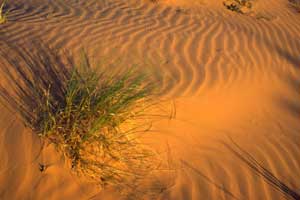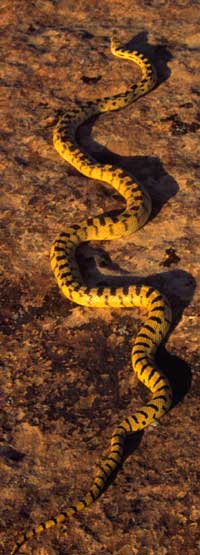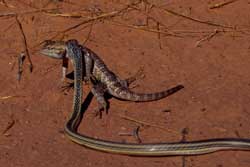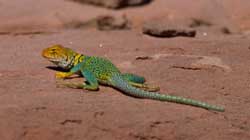 The bones were collected back in 2005. Excavated from a cliff base comprised of Navajo Sandstone, then transported to the Utah Museum of Natural History, at first the scientists believed the fossilized bones belonged to a pterosaur, a winged reptile.
The bones were collected back in 2005. Excavated from a cliff base comprised of Navajo Sandstone, then transported to the Utah Museum of Natural History, at first the scientists believed the fossilized bones belonged to a pterosaur, a winged reptile.
After prepping the materials and borrowing specimens from other institutions as references, the researchers determined they had a new species on the hands, er, table. A 190-million year old dinosaur from the Jurassic Period named Seitaad ruessi.
Named after the Seit’aad or Navajo sand-desert monster of the Diné creation story, and for Everett Ruess, the young artist/naturalist who wandered the Southwest with his burros and art supplies before vanishing forever. The fossilized Seitaad was buried in a massive sand dune that may have slid when the dinosaur was crossing over it.
The small dinosaur stood about 4 feet at the shoulder and weighed between 150 and 200 pounds. Although massive sand dunes comprise the Navajo Sandstone, there were interdunal lakes and ponds that supported vegetation during this dinosaur’s time. Dinosaurs from this formation are rare at best.
 The Navajo Sandstone
The Navajo Sandstone
Today, the Navajo Sandstone is one of many formations exposed on the Colorado Plateau. The type locality for the formation is the Navajo Reservation, where the best example of the formation occurs. In the Moab area, the Navajo forms rounded domes and sheer cliff walls in Arches and Canyonlands national parks, as well as in the Sand Flats Recreation Area and Behind-the-Rocks wilderness.
Still sparse with vegetation, the cross-bedded sandstone supports a different assemblage of species than its 190-million year old version. Instead of thundering herds of Seitaad wandering over the dunes, today smaller reptiles now roam.
Reptiles on the Run
Two small lizards that inhabit this desert are the side-blotched and tree lizard. The side-blotched has dark patches behind its forelegs, hence the common name. Their small size allows them to heat up more quickly than larger lizards; thus they appear first in the season and are the last to go into hibernation in the fall.
Tree lizards are often observed scampering over the rocks, but perhaps an early scientist found one on a tree – which is not their normal haunt. A series of Y-shaped dark bands down the back easily separates this lizard from the similar-sized side-blotched.
Although size has its advantages for thermoregulation, the disadvantage is these two lizards occupy a spot farther down the food chain. Not the top carnivores by a long shot, these two are prey for long-nosed leopard lizards or the colorful collard lizard.
The spotted skins of the leopard lizard reminded an early naturalist of the African cat, hence their common name. Although these lizards hunt for large insects and small lizards, they too may fall prey to snakes, birds or collard lizards.
The Most Colorful Lizard
Named for their dark collars, the collard lizard is the most colorful reptile in the desert. Its turquoise body and yellowish head make these lizards unmistakable. Often seen perched atop a boulder or rock outcrop, the collards scan their domain for intruders or prey. If alarmed or during a short chase after prey, these lizards may rear up on their hind legs and run on two legs. Known as “bipedal motion,” this is an impressive site. All that is missing is the earth-rumbling gait of Tyrannosaurus rex.
Snakes in the Sandstone
Of course, rattlesnakes, bull snakes and whipsnakes occur here, as well. The first is a pit viper, the rest are constrictors. Able to swallow prey larger than their mouths, thanks to a set of hinged jaws, sometimes these snakes attempt to take prey that is too large, as evidenced in the photo of a whipsnake trying to subdue a desert spiny lizard. Though the Seitaad andother dinosaurs no longer wander the Navajo Sandstone landscape, their distant relatives do. Fortunately, today’s reptiles are smaller versions of these ancient dwellers, and a visit to the arches doesn’t include running away from dinosaurs like in Michael Crichton’s novel Jurassic Park.

